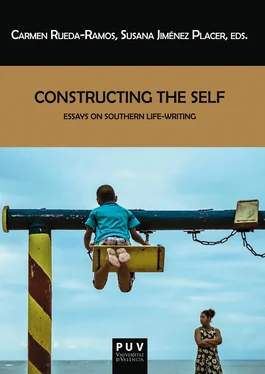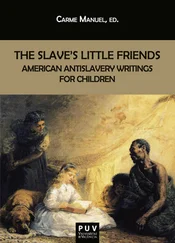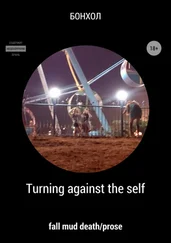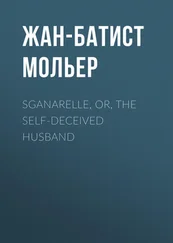AAVV - Constructing the Self
Здесь есть возможность читать онлайн «AAVV - Constructing the Self» — ознакомительный отрывок электронной книги совершенно бесплатно, а после прочтения отрывка купить полную версию. В некоторых случаях можно слушать аудио, скачать через торрент в формате fb2 и присутствует краткое содержание. Жанр: unrecognised, на английском языке. Описание произведения, (предисловие) а так же отзывы посетителей доступны на портале библиотеки ЛибКат.
- Название:Constructing the Self
- Автор:
- Жанр:
- Год:неизвестен
- ISBN:нет данных
- Рейтинг книги:3 / 5. Голосов: 1
-
Избранное:Добавить в избранное
- Отзывы:
-
Ваша оценка:
- 60
- 1
- 2
- 3
- 4
- 5
Constructing the Self: краткое содержание, описание и аннотация
Предлагаем к чтению аннотацию, описание, краткое содержание или предисловие (зависит от того, что написал сам автор книги «Constructing the Self»). Если вы не нашли необходимую информацию о книге — напишите в комментариях, мы постараемся отыскать её.
Constructing the Self — читать онлайн ознакомительный отрывок
Ниже представлен текст книги, разбитый по страницам. Система сохранения места последней прочитанной страницы, позволяет с удобством читать онлайн бесплатно книгу «Constructing the Self», без необходимости каждый раз заново искать на чём Вы остановились. Поставьте закладку, и сможете в любой момент перейти на страницу, на которой закончили чтение.
Интервал:
Закладка:
Finally, Part 5 “Sites for Self-Exploration: Travel and Illness Narratives” covers different spaces that have been recently used for self-discovery in the quest for identity. Some of the authors discussed in this section use traveling to other places and times as an autobiographical act that helps them extend their political activism or find themselves. Other authors, however, explore the body as a sensory text that allows them to reconstruct the past, while some others use illness narratives to tell the story of a personal struggle to reconstruct their bodies and sense of self. In the first of these essays, Jesús Varela-Zapata turns his attention to Alice Walker’s autobiographical travelogue Overcoming Speechlessness (2010), in which she narrates the horrors and cruelty she witnessed during her 2006 trip to Rwanda and the eastern Congo (as part of the Women for Women International organization) and the endless suffering of the Palestinian population during her 2009 trip to the Gaza Strip (invited by the women’s and anti-war group Code Pink). Varela-Zapata locates Walker’s travelogue within the African American tradition of international activism. He notes that many African Americans have tried to “spread their political action across borders, realizing that their fight [in the US] could act as a model for the African brothers striving for independence” first and then fighting against apartheid systems. Walker’s account of her journeys is interspersed with personal recollections of herself as a young woman in her twenties and thirties as an activist in the Civil Rights movement, finding parallels between the events she witnessed in Gaza and her own memories of growing up black in the Jim Crow South. As Varela-Zapata suggests, in telling the stories of people who have suffered genocides and brutality, Walker is also telling her own personal story as an activist during segregation. “Walker,” Varela-Zapata argues, “serves as a case in point to demonstrate that the genre of travel writing goes beyond the mere description of places or adventures or political vindication” and becomes instead a “kind of personal narrative” and an “exploration of the self” in which the author identifies with those suffering and condemns any form of oppression in the world.
Waldemar Zacharasiewicz analyzes John Gould Fletcher’s autobiography Life Is My Song (1937) in which the southern poet and essayist narrates his efforts to establish a literary career in the South and in Europe, where he lived as an American expatriate for years. In Italy, Paris and England, Fletcher spent several years writing poetry for Imagist anthologies in the company of fellow-poets like Ezra Pound, H. D. and especially Amy Lowell. Always oscillating between two worlds and multiple views, in his autobiography Fletcher presents his self-portrait as a poet constantly searching for a “stable identity.” His was a “troubled career” with “continual efforts to gain recognition as a poet.” But his autobiography, according to Zacharasiewicz, “includes a pattern of self-enquiry” in which the poet reveals his constant changes of residence, opinions of literary friends, as well as his constant revisions of earlier ideas and positions. His involvement in the Agrarian movement, his association with the Fugitives and his defense of “the values of the South only represented a temporary stance of a self that was almost habitually revisioning himself.” Fletcher was a cosmopolitan who explored the self, his region and the wider world, never quite at home anywhere and with bouts of manic depression that led him to forge and destroy significant friendships. If his poetic work sounds like a musical symphony, his autobiography represents, in Zarachasiewicz’s view, the true song of his life and his effort to construct a sense of self shaped by his travels and literary connections in Europe and the American South.
In her contribution, Candela Delgado Marín discusses Bobbie Ann Mason’s memoir Clear Springs (1999), an homage to her family and homeland, as an example of the use of sensory memories for the exploration of self and region. Perceiving her family history as “a dismantled jigsaw,” according to Delgado Marín, “Mason embarks on a journey to collect all the pieces together” in order to reconstruct her past, achieve meaning and have a clearer idea of her own identity. Mason’s memoir unfolds around the intersections between the body, perception and place, tracing a mental trip to her family farm in Kentucky and her mother, in which material objects and physical sensations powerfully awaken her memories and evoke family history. Mason becomes a time traveller who looks back into the family past “to form a coherent map of their communal identity,” finding links “between the self, the senses, and topography,” which together create what Delgado Marín calls ”a psychogeography of the South in her writing.” As Delgado Marín claims, for Mason remembrance is linked to the sensory experience of interacting both with family objects and “the landscapes of the past,” in which “the body of the narrator becomes the channel that connects the reader with the past.” Mason’s “acts of recollection” result from the fusion of two abilities, “sensorial perceptiveness and imagination,” although in Clear Springs the effects of the second ability do not undermine the truth of her account of the past. Thus, bodily impressions imaginatively retrieved allow Mason to reconstruct a sense of self and a version of the South that is gradually disappearing.
In the last essay in the volume, Marcel Arbeit looks into Reynolds Price’s autobiography A Whole New Life (1994) and Tim McLaurin’s Keeper of the Moon: A Southern Boyhood (1991) and The River Less Run (2000), as southern examples of autobiography that centers on disability and illness narratives. In fact, this type of personal narrative has become a sub-genre of life-writing. Arbeit analyzes the strategies Price and McLaurin adopted “to overcome their tribulations” during the different stages of a life-threatening disease, emphasizing the therapeutic value of writing to cope with the side-effects of illnesses and to confront death. If the southern autobiographical impulse, according to Berry, emerges from a constant “conversation with the self,” Arbeit situates these illness narratives as “the dialogue of an afflicted self” with a healthy audience while hoping for recovery. Inherent in this type of narratives is a sense of rebirth, reconstruction and restoration of self. While Price expresses his metamorphosis through the visions and spiritual revelations he experienced, McLaurin uses his own body as an autobiographical text by having the tattoo of a phoenix on the exact spot on his chest where he received radiation. These memoirs illustrate that our bodies have an autobiographical textual narrative to show not only the passage of time—with disfigurement, marks of disease and even victory over it—but also our own fragility as we approach the end of our life journey and story.
It was George Gusdorf who said that the autobiographical impulse is “the desire to endure in . . . memory” (qtd. in Fleischner 3), but in the case of southern writers, the urge to tell about the self and the South usually stems from a different need. While some authors indeed seek to record a private life and achieve greater self-knowledge, the impulse of southern writers is still strongly linked with the history of the region. Life-writing allows them precisely to construct their identity, which invariably involves, in Jerome Bruner’s phrasing, “not only the construction of self, but also a construction of one’s culture” (35). And although the autobiographical impulse has become more multifaceted and diverse, exploring new territories and adding new voices that have before been marginalized, perhaps the only thing that has not changed for southern writers is their need to tell, to engage in “conversation”—even if it is with the self. Regardless of the motives they may have to explore the self in hindsight, this impulse has produced some of the best literature in the South and, we dare say, despite Thomas Larson’s omissions, some of the best literature in the US. Rather than weaken in the globalization era, the autobiographical impulse in the South endures, flows and merges with the literary currents and critical theories of the twenty-first century.
Читать дальшеИнтервал:
Закладка:
Похожие книги на «Constructing the Self»
Представляем Вашему вниманию похожие книги на «Constructing the Self» списком для выбора. Мы отобрали схожую по названию и смыслу литературу в надежде предоставить читателям больше вариантов отыскать новые, интересные, ещё непрочитанные произведения.
Обсуждение, отзывы о книге «Constructing the Self» и просто собственные мнения читателей. Оставьте ваши комментарии, напишите, что Вы думаете о произведении, его смысле или главных героях. Укажите что конкретно понравилось, а что нет, и почему Вы так считаете.












